On Being Misunderstood is a feature at The Metropolitan Field Guide which will look at the variety of flora and fauna we live with which are too commonly misunderstood. From plants to wildlife, many of our daily interactions with these species are often negative or confused. Many of these reactions are based on misinformation. This new feature seeks to combat these misconceptions by bringing in guest writers to explain some of these species to us so we all have a better understanding and to set the record straight.
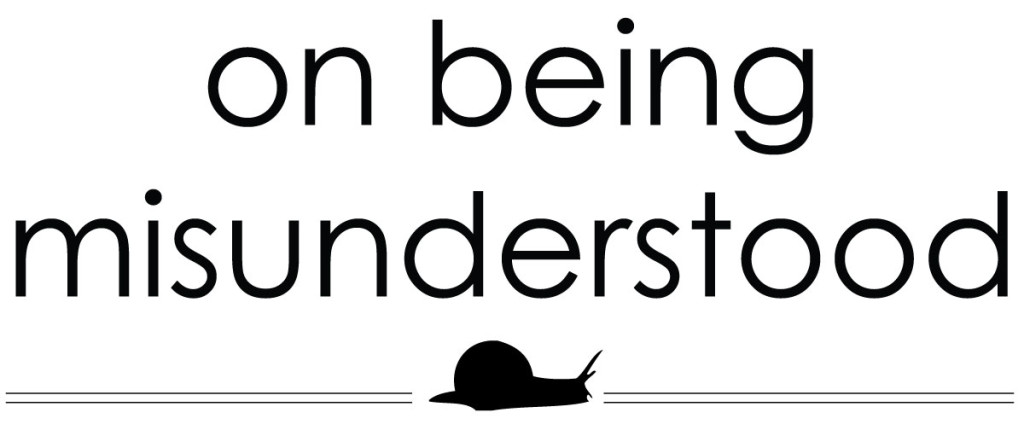
This edition of On Being Misunderstood is written by George Adams author of Gardening for the Birds, a book which I reviewed recently. You can read that review here if you missed it. George has taken on the subject of weeds and their benefits to birds for this post, which was one of my favorite aspects of his book. Weeds have been of much interest to me and I’ve started learning about the weeds I come across and am writing about them in ‘The Virtuous Weed‘.
Weeds
By George Adams. Author of “Gardening for the Birds. How to create a bird-friendly backyard”. Timber Press.
Weeds are generally misunderstood.
Nobody can really define what makes some plants weeds. Are they plants growing where humans do not want them to grow? Or are they plants that grow vigorously, crowding out other plants that we have judged as more desirable? Or are they plants that spoil the manicured lawn that we slave over? Ralph Waldo Emerson, the 19th century American essayist and poet asked, “What is a weed? He concluded it was “a plant whose virtues have not yet been discovered.”
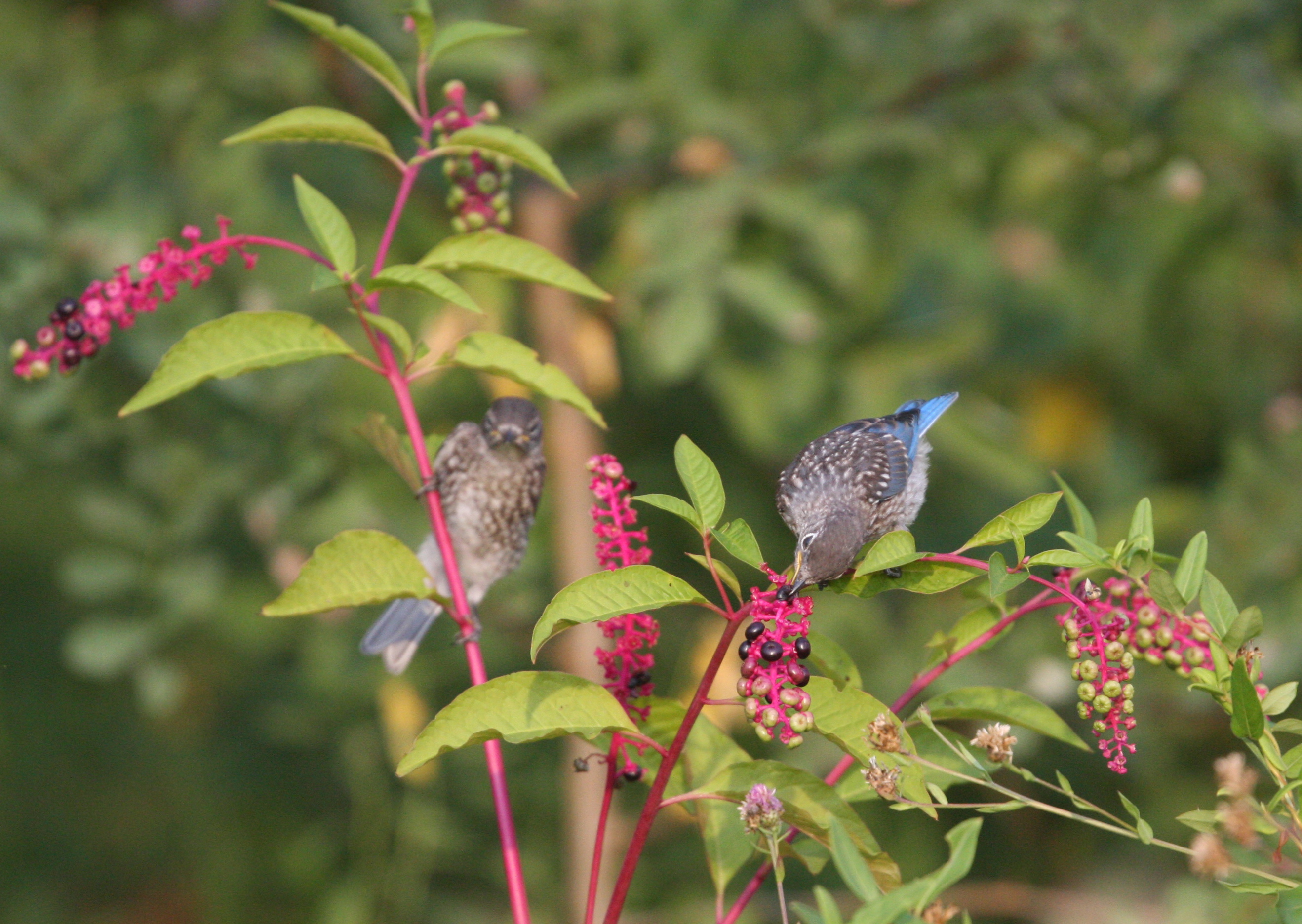
Eastern bluebirds devouring pokeberries
Page 65, Gardening for the Birds. Image © David Kinneer
Yet if we could ask the birds, they would have no problem describing “weeds” as highly desirable plants that provide enormous quantities of nutrient-rich food that sustain them throughout the year.
In fact, weeds are so attractive to birds, that many birds that would not normally visit a garden will do so if there are some weeds left unattended. If you accept the bird’s definition of weeds, that is “bird food, some of North America’s most beautiful songbirds will visit your garden, including species that will not even be coaxed to artificial feeding stations.
It’s easy to establish a wild-food patch. Find a secluded, preferably sunny section of your garden and simply exposing a patch of bare soil or leave a section of lawn unmown to allow dormant seeds to grow. Another way of establishing a wild-food patch is to string a wire across the bare patch of soil and wait for resting birds to eject their favoured seeds onto the soil below. Then wait for your mini-hedgerow to grow. Wild plants generally self-sow and become a crop of seeds that the birds will harvest the following year.
It’s that easy…. or you could try cultivating my pick of outstanding weeds.
Foxtail or bristlegrass (Setaria spp.) is a common weed along roadsides and undisturbed land throughout North America. At least 46 species of songbird including cardinals, grosbeaks, native sparrows and goldfinches flock to foxtail to feed on the attractive bristly seed heads
Pokeweed (Phytolacca americana). Pokeweed is a weed that is worth cultivating. The black-purple berries are eaten by 52 species of songbird including bluebirds, catbirds, thrushes, vireos, cardinals, and cedar waxwings.
Native sunflowers (Helianthus spp.) Forty-six species of songbird, including chickadees, nuthatches, goldfinches and titmice, are known to eat the seed; in fact sunflowers are one of the most important seed-producing plants for birds.
Common fidleneck (Amsinckia menziesii) an erect bristly annual herb, with attractive orange-yellow flowers. It is widespread, especially in the west. It provides an enormous crop of seeds especially favoured by Lawrence’s goldfinch during the nesting season.

Female Lawrence’s goldfinch feeding in common fiddleneck.
Page 66 , Gardening for the Birds. Image © Linda Tanner
Many so-called weeds are in fact under valued wildflowers, such as Joe-Pye Weed and Boneset that bloom in late summer and goldenrods with their attractive yellow flowers. Fleabane, Chicory, Asters, Black-eyed Susan, Yarrow and Hawkweed are all beautiful plants beloved by songbirds that make attractive additions to the garden.
In the winter months in cold climates, the seed heads that are left standing above the snow become an important food source when food is scarce. In the summer months, when nestlings must be fed, your ready-made food patch will be an additional source of nutrient-rich food that the birds constantly need.
With the addition of melodious song, beautiful color and the amusing antics of the birds attracted to your garden, you can answer Ralph Waldo Emerson’s question, “What is a weed? “ A plant whose virtues you’ve discovered.”

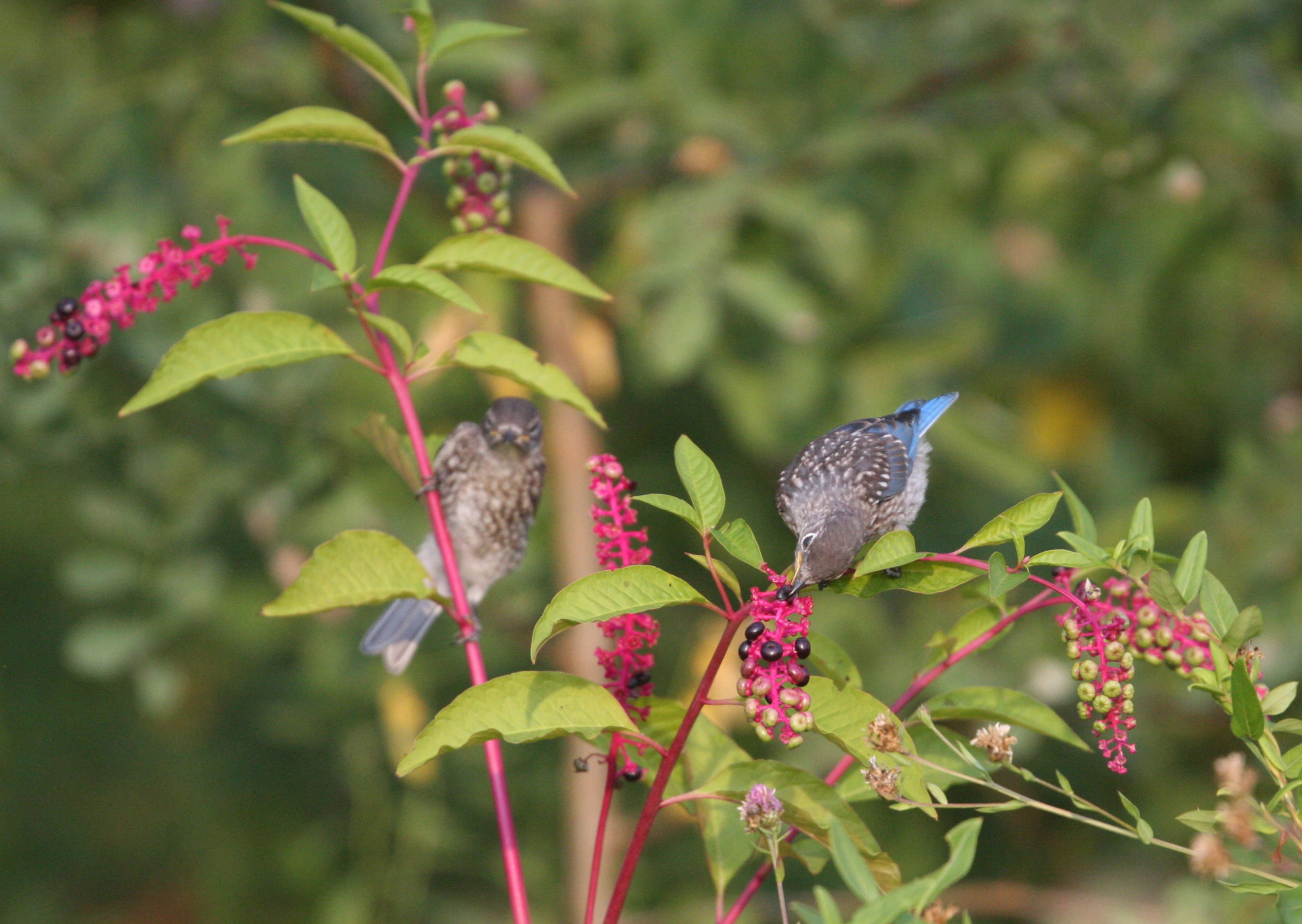

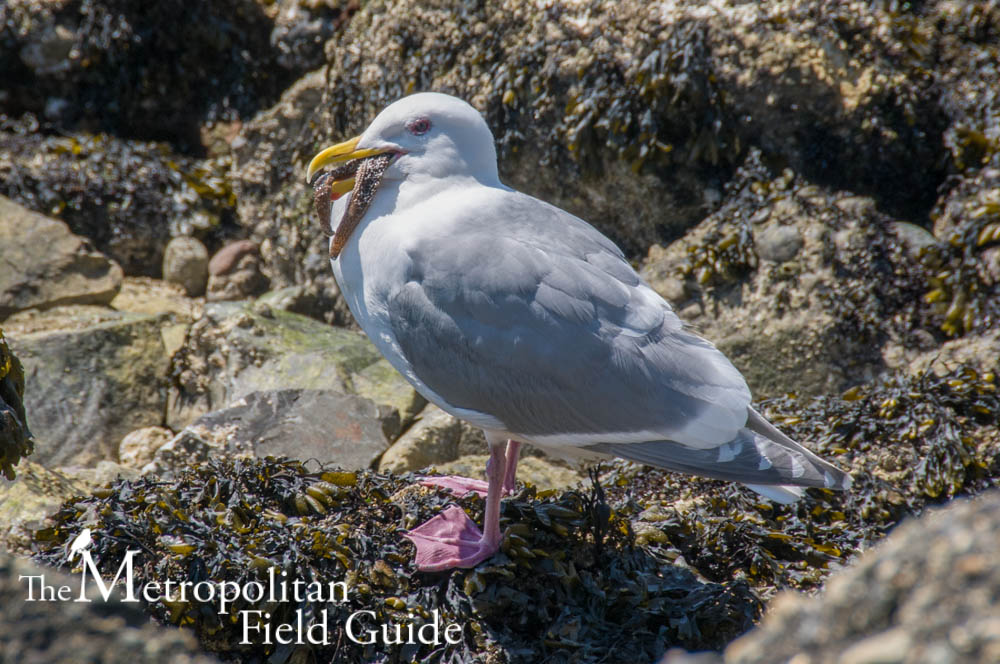

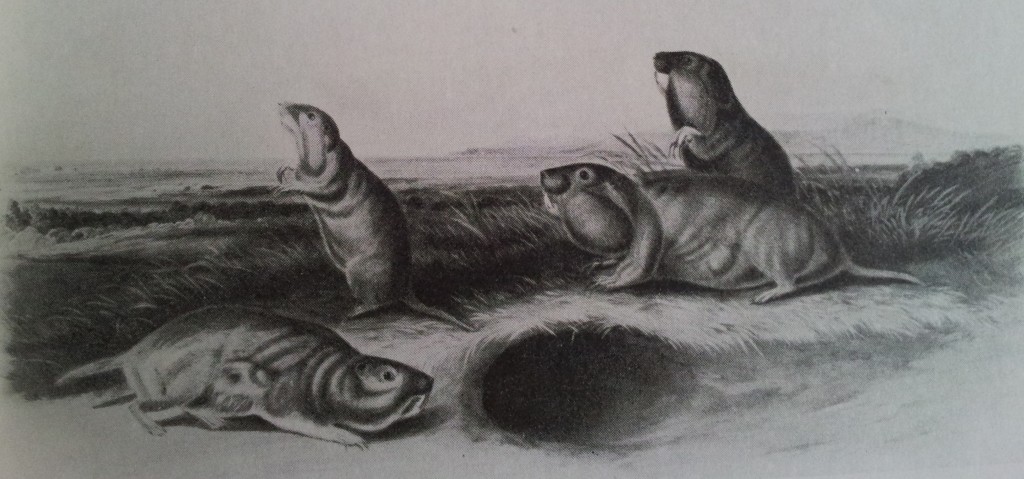

Hi Kelly – big fan of MFG! You make some good points about misunderstood weeds, but I’d have to respectfully disagree with the pokeweed suggestion. Phytolacca americana is relatively new to the NW, but it’s already on Oregon’s invasive weed watch list. The primary concern is that this weed spreads quite easily (via birds) and all parts of the plant can be toxic if ingested by humans or livestock. In the Portland area, efforts are being made to prevent this weed from becoming established (http://4countycwma.org/urban-weed-control/) . For people who like the look of pokeweed, I’d suggest our native elderberries as an alternative.
Hello Kelly! I am so happy to just now discover your site! Thank you!
And to Erik Carr ^ EVERY plant has many uses that are often unknown and dismissed under the umbrella of thinking that the plant is a noxious ‘weed.’ Pokeweed is one of the most powerful medicines in the plant kingdom and has been successfully used in cancer treatment and is currently being researched and tested for leukemia and AIDS. It is vigorous and dominant, so must be tended with this in mind. But often our toxic plants are therefore our most powerful plants; poisons kill poisons. As with every plant, it evolved alongside us and all our relations, and so can not be dismissed or ‘weeded’ out simply for fear that it might poison. Livestock will avoid it at all times unless their pasture or forage is so scarce or limited that they are desperate. Animals KNOW when a plant is poison and will not ingest it willingly.
Just a quick search for ‘pokeweed medicinal uses’ will reveal its uses throughout history and its potential future uses in the pharmaceutical world. I love pokeweed and always allow some bushes to grow on our Botanical sanctuary. The birds and animals love them too.
‘pokeweed medicinal uses’ search examples:
http://www.altnature.com/gallery/pokeweed.htm
http://www.naturalmedicinalherbs.net/herbs/p/phytolacca-americana=pokeweed.php
http://www.cancer.org/treatment/treatmentsandsideeffects/complementaryandalternativemedicine/herbsvitaminsandminerals/pokeweed
Thank you!
Barbara Salvatore
author of
“Big Horse Woman”
“…Everything on the earth has a purpose, every disease an herb to cure it, and every person a mission. This is the Indian theory of existence.” ~ Mourning Dove (Christine Quintasket) (ca. 1884-1936)
It’s interesting that Oregon would list it on their invasive watch list and that the USDA map would show it as native in 40 states including Oregon.
I have read many times that it is toxic. I also grew up eating it so I don’t see how it is a hazard to anyone. My mother who is now 89 still delights in finding it growing in her yard and starts picking the leaves to cook as soon as they are available in the spring. My favorite way to eat them is battered and fried but she also likes them cooked like turnip greens.
I have seen pokeweed since I was a little girl 50 plus years ago. I learned the berries were poisonous but we used them as ink during play. Poke leaves can be eaten when the plant is young, although I never have. I haven’t noticed it being invasive at all. I have one plant growing up near my birdfeeders, obviously a seed was deposited there by my bird friends. Can’t see why anyone would call it invasive. Now, the Asian honeysuckle, that’s an invasive plant!
What about milkweed being the only thing Monarch butterflies eat?
milkweed is the only plant that Monarch butterfly caterpillars can feed on (host plants) but, the adult Monarch butterfly will feed on many other plants as well (nectar plants). If you research it, there are many varieties of milkweed available but be sure which variety is suitable for each butterfly species. But, nature knows best so, the butterflies will know which to use. I am sorry if this reply is not what you were seeking with your question.
I have a couple of stands of chicory growing on each side of my driveway. The Goldfinches love it and return year after year. I love the blue flowers in the morning. It grows wild and all I had to do was not mow those sections of lawn. Surprisingly, I have had people ask me what those pretty blue flowers are.
Thanks for the interesting info. Sometimes the “weeds” are the prettiest (and most useful) plants in the field.